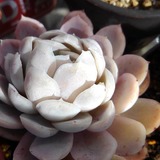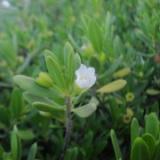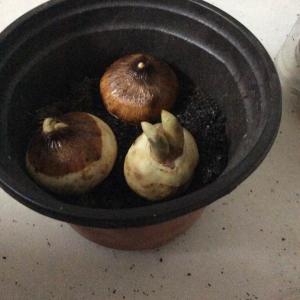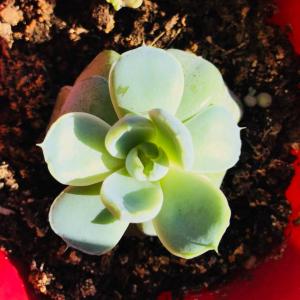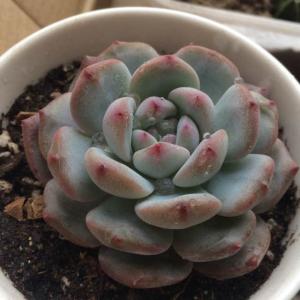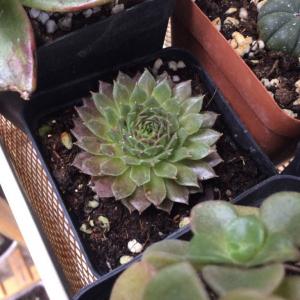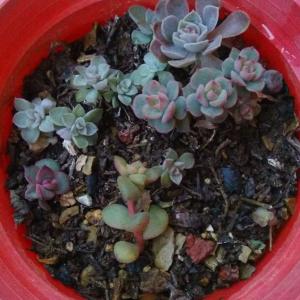文章
Miss Chen
2017年12月24日

Description: This perennial plant is unbranched, except slightly near the inflorescence, and up to 3' tall. The central stem is stout and covered with spreading white hairs. The pinnate compound leaves are also covered with white hairs, and consist of 3-11 leaflets. They are located primarily at the base of the plant, although a few small compound leaves alternate along the central stem above. Each leaflet is up to 3" long and 2" across, with the leaflets becoming larger toward the tip of the compound leaf (away from the stem). A leaflet is coarsely serrated along the margins, pinnately veined, and has an ovate or oblong shape (with blunt tips). The entire plant appears light or whitish green.
The inflorescence occurs as a tight cluster of the flowers at the apex of the plant, sometimes with smaller side clusters. A flower has 5 white petals, 5 light green sepals, 20 or more golden stamens, and a small golden reproductive structure in the center. It is about ¾" across and resembles the flower of a strawberry plant. There is no floral scent. The blooming period occurs during mid-summer and lasts about a month – only a few flowers are open at the same time. The small seeds are distributed to some extent by the wind. The root system consists of a central taproot, and there are rhizomes that help to spread the plant, although it is not particularly aggressive.
Cultivation: The preference is full sun and mesic to dry conditions. This plant is not particular about soil type, as long as the site is well-drained. In native habitats, it's often found in soil that contains some clay, rocky material, or sand. Drought tolerance is excellent, and foliar disease is rarely observed. This plant is easy to grow if the above requirements are met.
Range & Habitat: The native Prairie Cinquefoil occurs occasionally in the northern half of Illinois (see Distribution Map). Habitats include mesic to dry black soil prairies, clay prairies, sand prairies, gravel prairies, hill prairies, Black Oak savannas, and abandoned pastures. Unlike some of its weedy relatives, this plant is normally found in high quality habitats, rather than disturbed areas.

Faunal Associations: The flowers are visited primarily by small bees and flies. This includes Little Carpenter bees, Halictine bees, Syrphid flies, Tachinid flies, Blow flies, and others. Wasps and small butterflies are less common visitors. The larvae of a Gall Wasp (Gonaspis sp.) forms galls on the stems. The leaves and stems are occasionally eaten by some mammalian herbivores, such as rabbits and livestock, but it is a minor food source.
Photographic Location: The photographs were taken at Meadowbrook Park in Urbana, Illinois, and at a prairie of Parkland College in Champaign, Illinois.
Comments: This rather ordinary-looking plant resembles Potentilla recta (Sulfur Cinquefoil), an introduced plant, in its erect habit and overall appearance. However, Prairie Cinquefoil has white or cream flowers and hairy pinnate leaves, while Sulfur Cinquefoil has light yellow flowers and less hairy palmate leaves. An older scientific name of Prairie Cinquefoil is Potentilla arguta. When ultra-blue light is made visible through a special filter, patterns are revealed in the flowers of many cinquefoils (Potentilla spp.) that are not apparent to the human eye, but perceptible by most pollinating insects. These ultra-violet reflecting patterns help the flowers stand out from the background, and may function as nectar guides. Thus, the flowers are colored a combination of either white or yellow with bee-blue.
The inflorescence occurs as a tight cluster of the flowers at the apex of the plant, sometimes with smaller side clusters. A flower has 5 white petals, 5 light green sepals, 20 or more golden stamens, and a small golden reproductive structure in the center. It is about ¾" across and resembles the flower of a strawberry plant. There is no floral scent. The blooming period occurs during mid-summer and lasts about a month – only a few flowers are open at the same time. The small seeds are distributed to some extent by the wind. The root system consists of a central taproot, and there are rhizomes that help to spread the plant, although it is not particularly aggressive.
Cultivation: The preference is full sun and mesic to dry conditions. This plant is not particular about soil type, as long as the site is well-drained. In native habitats, it's often found in soil that contains some clay, rocky material, or sand. Drought tolerance is excellent, and foliar disease is rarely observed. This plant is easy to grow if the above requirements are met.
Range & Habitat: The native Prairie Cinquefoil occurs occasionally in the northern half of Illinois (see Distribution Map). Habitats include mesic to dry black soil prairies, clay prairies, sand prairies, gravel prairies, hill prairies, Black Oak savannas, and abandoned pastures. Unlike some of its weedy relatives, this plant is normally found in high quality habitats, rather than disturbed areas.

Faunal Associations: The flowers are visited primarily by small bees and flies. This includes Little Carpenter bees, Halictine bees, Syrphid flies, Tachinid flies, Blow flies, and others. Wasps and small butterflies are less common visitors. The larvae of a Gall Wasp (Gonaspis sp.) forms galls on the stems. The leaves and stems are occasionally eaten by some mammalian herbivores, such as rabbits and livestock, but it is a minor food source.
Photographic Location: The photographs were taken at Meadowbrook Park in Urbana, Illinois, and at a prairie of Parkland College in Champaign, Illinois.
Comments: This rather ordinary-looking plant resembles Potentilla recta (Sulfur Cinquefoil), an introduced plant, in its erect habit and overall appearance. However, Prairie Cinquefoil has white or cream flowers and hairy pinnate leaves, while Sulfur Cinquefoil has light yellow flowers and less hairy palmate leaves. An older scientific name of Prairie Cinquefoil is Potentilla arguta. When ultra-blue light is made visible through a special filter, patterns are revealed in the flowers of many cinquefoils (Potentilla spp.) that are not apparent to the human eye, but perceptible by most pollinating insects. These ultra-violet reflecting patterns help the flowers stand out from the background, and may function as nectar guides. Thus, the flowers are colored a combination of either white or yellow with bee-blue.
1
0
文章
Miss Chen
2017年12月24日

Description: This perennial wildflower consists of a low rosette of basal leaves and a flowering stalk of flowers about ½–1½' tall. The basal leaves are up to 6" long and 2½" across; they are ovate-oblong or obovate, medium green, hairless, and smooth along their margins. The erect flowering stalk is hairless and devoid of leaves; at its apex there is an umbel of 3-20 flowers. The flowers nod downward from their drooping pedicels. Each flower is about ¾" long, consisting of a corolla with 5 oblong lobes, a light green calyx with 5 triangular teeth, and 5 stamens that are appressed together around a single slender style. The corolla is usually rosy pink, although sometimes it is a lighter shade of pink. The lobes of the corolla are turned inside-out, fully exposing the reproductive organs (which are pointed downward). Near its base, the corolla has patches of yellow and white. The anthers of the stamens are yellowish orange. The blooming period occurs during the late spring for about 2 weeks. Afterwards, the pedicels of the flowers turn upward and the developing seed capsules are held erect. At maturity, the papery walls of the seed capsules become light brown. Each seed capsule contains many tiny seeds. The root system consists of a crown of fibrous roots. The foliage withers away by mid-summer. This wildflower reproduces by reseeding itself.
Cultivation: The preference is full or partial sun during the period of vegetative growth and development. This occurs during the spring and it is quite rapid. At this time, ample moisture and cool to moderate temperatures are required. This wildflower can adapt to a loamy garden soil, but it often occurs on rocky slopes in its native habitat. Some protection from the hot afternoon sun is desirable, but not required if there is ample moisture.
Range & Habitat: Amethyst Shooting Star is found in only a few counties in NW and west-central Illinois (see Distribution Map); it is native and uncommon. Habitats include thinly wooded bluffs, rocky cliffs, and sheltered areas of upland prairies where moisture tends to accumulate. In Illinois, this wildflower is found in hilly areas along the Illinois and Mississippi Rivers. In other states, it is often found in mountainous areas.
Faunal Associations: The flowers are visited by bumblebees and other bees for their pollen. Through the rapid vibration of their abdominal muscles, bumblebee visitors engage in "buzz pollination," which induces the flower to release its pollen. The low foliage is probably edible to mammalian herbivores, but it is rarely eaten because of its inconspicuous and ephemeral nature.
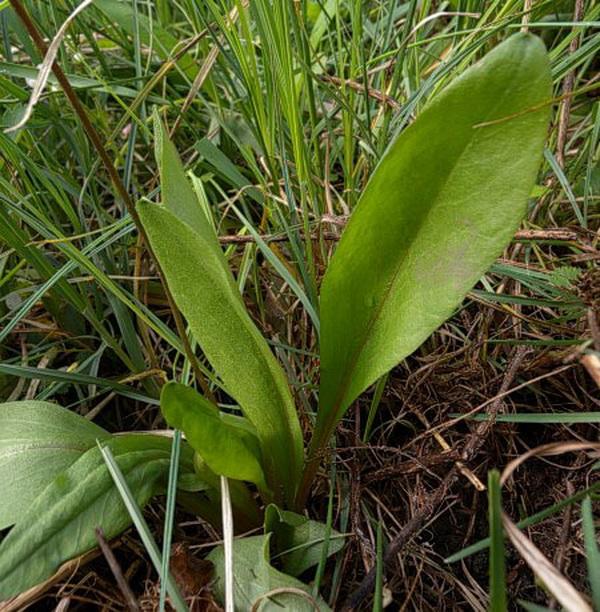
Photographic Location: The wildflower garden of the webmaster in Urbana, Illinois.
Comments: This is a little jewel of a plant. It closely resembles the more common Dodecatheon meadia (Shooting Star), but the flowers of Amethyst Shooting Star are usually a deeper shade of pink. In general, Amethyst Shooting Star is slightly smaller in size than Shooting Star, and the flowering stalk of each plant has a tendency to produce fewer flowers (less than 20); sometimes, the flowering stalk of a robust Shooting Star produces substantially more than 20 flowers. The most critical difference between these two plants, however, consists of the characteristics of their seed capsules: At maturity, the seed capsules of Amethyst Shooting Star are light brown and thin-walled, while the seed capsules of Shooting Star are dark brown and thick-walled. The basal leaves of these two species are very similar.
Cultivation: The preference is full or partial sun during the period of vegetative growth and development. This occurs during the spring and it is quite rapid. At this time, ample moisture and cool to moderate temperatures are required. This wildflower can adapt to a loamy garden soil, but it often occurs on rocky slopes in its native habitat. Some protection from the hot afternoon sun is desirable, but not required if there is ample moisture.
Range & Habitat: Amethyst Shooting Star is found in only a few counties in NW and west-central Illinois (see Distribution Map); it is native and uncommon. Habitats include thinly wooded bluffs, rocky cliffs, and sheltered areas of upland prairies where moisture tends to accumulate. In Illinois, this wildflower is found in hilly areas along the Illinois and Mississippi Rivers. In other states, it is often found in mountainous areas.
Faunal Associations: The flowers are visited by bumblebees and other bees for their pollen. Through the rapid vibration of their abdominal muscles, bumblebee visitors engage in "buzz pollination," which induces the flower to release its pollen. The low foliage is probably edible to mammalian herbivores, but it is rarely eaten because of its inconspicuous and ephemeral nature.

Photographic Location: The wildflower garden of the webmaster in Urbana, Illinois.
Comments: This is a little jewel of a plant. It closely resembles the more common Dodecatheon meadia (Shooting Star), but the flowers of Amethyst Shooting Star are usually a deeper shade of pink. In general, Amethyst Shooting Star is slightly smaller in size than Shooting Star, and the flowering stalk of each plant has a tendency to produce fewer flowers (less than 20); sometimes, the flowering stalk of a robust Shooting Star produces substantially more than 20 flowers. The most critical difference between these two plants, however, consists of the characteristics of their seed capsules: At maturity, the seed capsules of Amethyst Shooting Star are light brown and thin-walled, while the seed capsules of Shooting Star are dark brown and thick-walled. The basal leaves of these two species are very similar.
0
1
文章
Miss Chen
2017年12月24日

Description: This herbaceous plant is a summer annual that has stems about ½–1' long. These stems are usually erect or ascending, although sometimes they sprawl across the ground. The stems are unbranched or sparingly branched, light green to red, bluntly 4-angled (at least above), and short-pubescent (var. teres) to hairy (var. setifera). Pairs of opposite leaves occur along the entire length of each stem. These leaves are up to 1½" long and ¼" across; they are linear, linear-lanceolate, or linear-oblong in shape, entire (toothless) and involute (rolled downward) along their margins, and sessile with prominent central veins. The upper leaf surface is medium green and appressed short-pubescent to glabrous, while the lower leaf surface is slightly more pale and short-pubescent primarily along the central vein. The leaf bases along each stem are joined with merged stipules that form shallow cup-like structures. The exterior of these stipules is green to whitish green and sparsely short-pubescent to hairy. Along the upper rim of each pair of merged stipules, there are long erect bristles up to ½" long; these bristles are light green, white, or red.

Either solitary or small clusters of 2-3 flowers are produced from the axils of the middle to upper leaves. Each flower is up to ¼" long, consisting of a tubular-funnelform corolla with 4 spreading lobes, 4 green sepals that are lanceolate in shape, 4 stamens with pale yellow to white anthers, and an inferior ovary with a single white style. The corolla is lilac, pink, or white; its exterior is often finely short-hairy. The sepals are sparsely short-pubescent to hairy; they are shorter than the corolla. The style has a knobby (capitate) tip. Both the stamens and style are included or only slightly exserted from the corolla. The blooming period occurs from mid-summer to early autumn, lasting about 1-2 months. There is no noticeable floral scent. Afterwards, the flowers are replaced by dry fruits (schizocarps) that are obovoid in shape with remnants of the persistent sepals at their apices. Immature fruits are green, while mature fruits are brown. These fruits are sparsely short-pubescent (var. teres) to hairy (var. setifera); their fine hairs are straight and ascending. Eventually, these fruits divide into 2 nutlets each. The nutlets are about 3Distribution Map mm. (1/8") long, half-obovoid in shape, brown, and more or less covered with persistent fine hairs. The root system consists of a slender taproot with secondary feeder roots. This plant often forms colonies by reseeding itself.
Cultivation: The preference is full sun, dry conditions, and poor soil containing an abundance of sand, gravel, or compacted clay. This plant will also tolerate partial sun and moister conditions with fertile soil, in which case it will be displaced by taller plants eventually. Drought tolerance is quite good because of the long taproot.
Range & Habitat: Rough Buttonweed occurs occasionally in the southern half of Illinois, where it is native, and a few counties in the northern half, where it is probably adventive. Illinois lies along the northern range limit of this species. Habitats include upland prairies where there is sparse vegetation, hill prairies, sand prairies, rocky glades, gravel bars along rivers, pathways with compacted soil, gravelly areas along roadsides, gravelly areas along railroads, and barren waste ground. Areas with a history of disturbance are preferred. Rough Buttonweed is regarded as a common weed in the southern states, but it is less ubiquitous in Illinois.
Faunal Associations: Limited information is available about this plant's relationships to various fauna. The nectar and pollen of the flowers probably attract small bees and flower flies (Syrphidae). It has been reported by Tietz (1972) that caterpillars of the Tersa Sphinx (Xylophanes tersa) feed on Rough Buttonweed. This moth has a southern distribution, but it is a strong flyer that migrates to the northern states during the summer. Another insect that feeds on this plant is a flea beetle, Strabala rufa (Clark et al., 2004). This flea beetle has a brownish orange to red carapace. The Greater Prairie Chicken eats the seeds, and possibly other gamebirds feed on them as well.
Photographic Location: The photographs were taken of plants growing on a little-used path with compacted soil. This path was located near an abandoned railroad in Champaign County, Illinois. Rather large colonies of Rough Buttonweed occurred in this area, primarily in sunny areas where Partridge Pea (Chamaecrista fasciculata) and Flowering Spurge (Euphorbia corollata) also occurred. The photographed plants are the less hairy variety of Rough Buttonweed, Diodia teres teres.
Comments: Rough Buttonweed (Diodia teres) is not particularly showy and it is easily overlooked. This plant resembles some of the other buttonweeds (Diodia spp.), but it has more narrow leaves and it prefers to grow in drier, sunnier places. Compared to Smooth Buttonweed (Diodia virginica), Rough Buttonweed has shorter flowers, undivided styles, and corollas that are often lilac or pink. Smooth Buttonweed has white flowers with slender divided styles. Other common names of Diodia teres are 'Poorjoe' and 'Poverty Weed.' These are primarily southern names that refer to this plant's preference for poor soil. There are two varieties of Rough Buttonweed: the typical variety (var. teres) and a more hairy variety (var. setifera). This latter variety occurs in southern Illinois.

Either solitary or small clusters of 2-3 flowers are produced from the axils of the middle to upper leaves. Each flower is up to ¼" long, consisting of a tubular-funnelform corolla with 4 spreading lobes, 4 green sepals that are lanceolate in shape, 4 stamens with pale yellow to white anthers, and an inferior ovary with a single white style. The corolla is lilac, pink, or white; its exterior is often finely short-hairy. The sepals are sparsely short-pubescent to hairy; they are shorter than the corolla. The style has a knobby (capitate) tip. Both the stamens and style are included or only slightly exserted from the corolla. The blooming period occurs from mid-summer to early autumn, lasting about 1-2 months. There is no noticeable floral scent. Afterwards, the flowers are replaced by dry fruits (schizocarps) that are obovoid in shape with remnants of the persistent sepals at their apices. Immature fruits are green, while mature fruits are brown. These fruits are sparsely short-pubescent (var. teres) to hairy (var. setifera); their fine hairs are straight and ascending. Eventually, these fruits divide into 2 nutlets each. The nutlets are about 3Distribution Map mm. (1/8") long, half-obovoid in shape, brown, and more or less covered with persistent fine hairs. The root system consists of a slender taproot with secondary feeder roots. This plant often forms colonies by reseeding itself.
Cultivation: The preference is full sun, dry conditions, and poor soil containing an abundance of sand, gravel, or compacted clay. This plant will also tolerate partial sun and moister conditions with fertile soil, in which case it will be displaced by taller plants eventually. Drought tolerance is quite good because of the long taproot.
Range & Habitat: Rough Buttonweed occurs occasionally in the southern half of Illinois, where it is native, and a few counties in the northern half, where it is probably adventive. Illinois lies along the northern range limit of this species. Habitats include upland prairies where there is sparse vegetation, hill prairies, sand prairies, rocky glades, gravel bars along rivers, pathways with compacted soil, gravelly areas along roadsides, gravelly areas along railroads, and barren waste ground. Areas with a history of disturbance are preferred. Rough Buttonweed is regarded as a common weed in the southern states, but it is less ubiquitous in Illinois.
Faunal Associations: Limited information is available about this plant's relationships to various fauna. The nectar and pollen of the flowers probably attract small bees and flower flies (Syrphidae). It has been reported by Tietz (1972) that caterpillars of the Tersa Sphinx (Xylophanes tersa) feed on Rough Buttonweed. This moth has a southern distribution, but it is a strong flyer that migrates to the northern states during the summer. Another insect that feeds on this plant is a flea beetle, Strabala rufa (Clark et al., 2004). This flea beetle has a brownish orange to red carapace. The Greater Prairie Chicken eats the seeds, and possibly other gamebirds feed on them as well.
Photographic Location: The photographs were taken of plants growing on a little-used path with compacted soil. This path was located near an abandoned railroad in Champaign County, Illinois. Rather large colonies of Rough Buttonweed occurred in this area, primarily in sunny areas where Partridge Pea (Chamaecrista fasciculata) and Flowering Spurge (Euphorbia corollata) also occurred. The photographed plants are the less hairy variety of Rough Buttonweed, Diodia teres teres.
Comments: Rough Buttonweed (Diodia teres) is not particularly showy and it is easily overlooked. This plant resembles some of the other buttonweeds (Diodia spp.), but it has more narrow leaves and it prefers to grow in drier, sunnier places. Compared to Smooth Buttonweed (Diodia virginica), Rough Buttonweed has shorter flowers, undivided styles, and corollas that are often lilac or pink. Smooth Buttonweed has white flowers with slender divided styles. Other common names of Diodia teres are 'Poorjoe' and 'Poverty Weed.' These are primarily southern names that refer to this plant's preference for poor soil. There are two varieties of Rough Buttonweed: the typical variety (var. teres) and a more hairy variety (var. setifera). This latter variety occurs in southern Illinois.
0
0
文章
Miss Chen
2017年12月24日

Description: This perennial wildflower is 1½-3' tall, more or less erect, and either unbranched or sparingly so. The central stem is light green, terete, and hairy. Alternate trifoliate leaves occur along the entire length of this stem; they have short petioles (nearly sessile to ¼" in length) and leaflets that are 1-3" long and ¼-¾" across (at least 3 times longer than they are across). The leaflets are narrowly oblong to lanceolate-oblong and smooth along their margins; they are blunt at the tips and bases. The upper surface of the leaflets is dull green and sparsely covered with stiff appressed hairs, while the lower surface is pale green and hairy along the veins. At the base of each trifoliate leaf, there is a pair of small stipules that are linear-lanceolate; these soon wither away. The central stem (and any lateral stems) terminates in a narrow inflorescence about 6-12" long. This inflorescence is usually a simple raceme of flowers, although sometimes it is a sparingly branched panicle. The central stalk of thisRaceme inflorescence is light to medium green and hairy. Individual flowers are about ¼" across, consisting of 5 petals that are white, pink, or rose-pink, a short tubular calyx with 5 teeth, several stamens, and a pistil with a single style. The petals form an upper banner and 2 wings that enclose a keel; at the base of the banner, there is a patch of pale yellow. The hairy calyx varies from light green to purple. Each flower has a short slender pedicel up to ¼" long. The blooming period occurs during mid- to late summer and lasts about 3-4 weeks. Usually, only a few flowers are in bloom at the same time. There is no noticeable floral scent. The flowers are replaced by flattened seedpods called 'loments' that consist of 1-3 segments with convex upper and lower sides. The lower side of each segment is more convex that the upper side. The loments are pale green and covered with hooked hairs. The loments have a tendency to break apart into individual segments; each segment contains a single seed. The root system consists of a deep taproot. This wildflower spreads by reseeding itself.
Cultivation: The preference is full sun, dry conditions, and sandy soil. However, this wildflower will tolerate partial sun and either loamy or rocky soil. The root system adds nitrogen to the soil via symbiotic bacteria.
Range & Habitat: The native Sessile-Leaved Tick Trefoil is occasional in southern, west-central, and NE Illinois, while in the rest of the state it is rare or absent (see Distribution Map). Habitats include dry sand prairies and typical prairies, railroad prairies, dry sandy savannas and typical savannas, rocky open woodlands, limestone glades, and roadside embankments.
Faunal Associations: The flowers are cross-pollinated primarily by long-tongued bees, which collect pollen. These floral visitors include bumblebees, leaf-cutting bees (Megachile spp.), long-horned bees (Melissodes spp.), alkali bees (Nomia spp.), and others. Some insects feed on the foliage, flowers, or seeds of Sessile-Leaved Tick Trefoil and other species of this genus. This includes the caterpillars of several skippers, specifically: Achalarus lyciades (Hoary Edge), Epargyreus clarus (Silver-Spotted Skipper), Thorybes bathyllus (Southern Cloudywing), and Thorybes pylades (Northern Cloudywing). Other insect feeders include caterpillars of the butterflies Everes comyntas (Eastern Tailed Blue) and Strymon melinus (Gray Hairstreak), caterpillars of the moths Hypena scabra (Green Cloverworm) and Grapholita fana (Chesire Cat Moth), leaf-mining larvae of the Buprestid beetles Pachyschelus confusus and Pachyschelus laevigatus, larvae of the seed weevil Apion decoloratum, the thrips Echinothrips americanus and Neohydatothrips desmodianus, and the aphid Microparsus variabilis. There are also several leaf beetles that feed on tick trefoil species, specifically: Anomoea laticlavia (Clay-colored Leaf Beetle), Bassareus lituratus, Cerotoma trifurcata (Bean Leaf Beetle), Colaspis brunnea (Grape Colaspis), Cryptocephalus insertus, Odontota dorsalis (Locust Leaf Miner), Pachybrachis nigricornis, Pachybrachis othonus, Phyllecthris dorsalis, and Saxinis omogera.

Some vertebrate animals also feed on these plants. Both the Bobwhite Quail and Wild Turkey eat the seeds, while the White-Tailed Deer, Cottontail Rabbit, horses, cattle, and other mammalian herbivores readily consume the foliage. Because the hooked hairs of the loments can cling to clothing and fur, the seeds are distributed into new areas by humans and mammals.
Photographic Location: The wildflower garden of the webmaster in Urbana, Illinois.
Comments: Sessile-Leaved Tick Trefoil is one of the Desmodium spp. that is often found in prairies. It produces smaller and fewer flowers than another prairie species, Desmodium canadense (Showy Tick Trefoil). Sessile-Leaved Tick Trefoil can be distinguished from other species in this difficult genus by its more narrow leaflets (at least 3 times as long as across), very short petioles (¼" in length or less), and its narrow inflorescence (a simple raceme or sparingly branched panicle).
Cultivation: The preference is full sun, dry conditions, and sandy soil. However, this wildflower will tolerate partial sun and either loamy or rocky soil. The root system adds nitrogen to the soil via symbiotic bacteria.
Range & Habitat: The native Sessile-Leaved Tick Trefoil is occasional in southern, west-central, and NE Illinois, while in the rest of the state it is rare or absent (see Distribution Map). Habitats include dry sand prairies and typical prairies, railroad prairies, dry sandy savannas and typical savannas, rocky open woodlands, limestone glades, and roadside embankments.
Faunal Associations: The flowers are cross-pollinated primarily by long-tongued bees, which collect pollen. These floral visitors include bumblebees, leaf-cutting bees (Megachile spp.), long-horned bees (Melissodes spp.), alkali bees (Nomia spp.), and others. Some insects feed on the foliage, flowers, or seeds of Sessile-Leaved Tick Trefoil and other species of this genus. This includes the caterpillars of several skippers, specifically: Achalarus lyciades (Hoary Edge), Epargyreus clarus (Silver-Spotted Skipper), Thorybes bathyllus (Southern Cloudywing), and Thorybes pylades (Northern Cloudywing). Other insect feeders include caterpillars of the butterflies Everes comyntas (Eastern Tailed Blue) and Strymon melinus (Gray Hairstreak), caterpillars of the moths Hypena scabra (Green Cloverworm) and Grapholita fana (Chesire Cat Moth), leaf-mining larvae of the Buprestid beetles Pachyschelus confusus and Pachyschelus laevigatus, larvae of the seed weevil Apion decoloratum, the thrips Echinothrips americanus and Neohydatothrips desmodianus, and the aphid Microparsus variabilis. There are also several leaf beetles that feed on tick trefoil species, specifically: Anomoea laticlavia (Clay-colored Leaf Beetle), Bassareus lituratus, Cerotoma trifurcata (Bean Leaf Beetle), Colaspis brunnea (Grape Colaspis), Cryptocephalus insertus, Odontota dorsalis (Locust Leaf Miner), Pachybrachis nigricornis, Pachybrachis othonus, Phyllecthris dorsalis, and Saxinis omogera.

Some vertebrate animals also feed on these plants. Both the Bobwhite Quail and Wild Turkey eat the seeds, while the White-Tailed Deer, Cottontail Rabbit, horses, cattle, and other mammalian herbivores readily consume the foliage. Because the hooked hairs of the loments can cling to clothing and fur, the seeds are distributed into new areas by humans and mammals.
Photographic Location: The wildflower garden of the webmaster in Urbana, Illinois.
Comments: Sessile-Leaved Tick Trefoil is one of the Desmodium spp. that is often found in prairies. It produces smaller and fewer flowers than another prairie species, Desmodium canadense (Showy Tick Trefoil). Sessile-Leaved Tick Trefoil can be distinguished from other species in this difficult genus by its more narrow leaflets (at least 3 times as long as across), very short petioles (¼" in length or less), and its narrow inflorescence (a simple raceme or sparingly branched panicle).
0
0
文章
Miss Chen
2017年12月23日

Description: This herbaceous perennial plant is 2½–4' tall, branching sparingly. The stout central stem is round and covered with fine hooked hairs. The alternate compound leaves are trifoliate and have petioles about 1–2½" long. The leaflets are up to 3½" long and 1" across. A typical leaflet is lanceolate-oblong or lanceolate-ovate, with smooth margins, and a leathery texture. The base of a leaflet is rounded, while the tip is usually blunt. The lower surface is light or whitish green and has prominent veins; there are hooked hairs along the major veins. The central stem terminates in an elongated raceme of flowers about ½–1½' long. Usually, only a few flowers are in bloom at the same time.

Each flower is about 1/3" (8 mm.) in length (up and down), and either pale purple or white. The two upper petals are larger than the others and well-rounded; when these petals are pale purple, there is a small patch of white near the throat of the flower, which is surrounded by a narrow border of burgundy. There are also two side petals that enclose a lower petal, which project outward. Together, they form a typical pea-shaped flower. The hairy green calyx is divided into 5 lobes of unequal length, while the pedicels of the flowers are slender and hairy. The blooming period usually occurs during mid-summer and lasts about 3 weeks. There is no noticeable floral scent. The flowers are replaced by flat seedpods about 1-3" long that are called 'loments.' These loments have 3-9 segments that are well-rounded on both the upper and lower sides. The surface of these loments are covered with hooked hairs that can cling to clothing or fur. Individual segments of the loments can break off and cling to more than one passing carrier. The root system consists of a stout taproot. Vegetative colonies are not formed.
Cultivation: The preference is full or partial sun, mesic conditions, and a fertile loam or clay loam soil. This plant has good drought tolerance, and it appears to have fewer problems with powdery mildew than some other Desmodium spp., such as Desmodium canadense (Showy Tick Trefoil). If it is grown in full sun, Illinois Tick Trefoil remains quite erect because of its stout central stem. Its root system adds nitrogen to the soil.

Range & Habitat: The native Illinois Tick Trefoil occurs occasionally in most counties of central and northern Illinois, but it is uncommon or absent in many areas of southern Illinois (see Distribution Map). Habitats include mesic to slightly dry black soil prairies, sand prairies (less typical), oak savannas, scrubby barrens, and areas along railroads and roadsides, especially where prairie remnants occur. Usually, this species occurs as scattered plants, and doesn't form the dense colonies of some Desmodium spp., such as Showy Tick Trefoil.
Faunal Associations: The flowers attract long-tongued bees primarily, including bumblebees and leaf-cutting bees (Megachile spp.); only pollen is available as a floral reward. Other insect feed on the leaves, seeds, and other parts of Illinois Tick Trefoil and other tick trefoils (Desmodium spp.). These insects include the seed-eating larvae of Apion reconditum andTrifoliate Leaves other straight-snouted weevils; leaf-mining larvae of Pachyschelus laevigatus (a metallic wood-boring beetle); Colaspis brunnea (Grape Colaspis), Odontota horni (Soybean Leafminer), and other leaf beetles; larvae of Clinodiplosis meibomiifoliae and other gall flies; Aphis glycines (Soybean Aphid) and other aphids; the seed-eating Megalotomus quinquespinosus (Lupine Bug); leaf-eating larvae of Atomacera debilis (an Argid sawfly); flower- and bud-eating larvae of Grapholita fana (Chesire Cat Moth) and larvae of other moths; larvae of Thorybes bathyllus (Southern Cloudywing), Thorybes pylades (Northern Cloudywing), and other skippers; larvae of two butterflies, Everes comyntas (Eastern Tailed Blue) and Strymon melinus (Gray Hairstreak); and Neohydatothrips desmodianus (Tick Trefoil Thrips). The Insect Table provides a more complete list of these insects. Among vertebrate animals, the seeds of tick trefoils are eaten by the Bobwhite Quail, Wild Turkey, and White-footed Mouse (Martin et al., 1951/1961). The foliage is palatable to mammalian herbivores, including deer, rabbits, groundhogs, and livestock. These same animals help to distribute the seedpods, which cling to fur, spreading Illinois Tick Trefoil and other tick trefoils to new areas. People also help to distribute the seedpods because they readily cling to clothing.
Photographic Location: The photographs were taken at the Shortline Railroad Prairie in Champaign County, Illinois. The plants were growing in a mesic black soil prairie not far from a corn field.
Comments: Illinois Tick Trefoil is not very showy because only a few flowers are in bloom at the same time. Unlike other Desmodium spp. (Tick Trefoils), it has high fidelity to prairies, and is less often observed around woodlands. Illinois Tick Trefoil can be readily distinguished from Desmodium canadense (Showy Tick Trefoil), another species that often occurs in prairies, by considering the following features: 1) the former species usually has fewer flowers in bloom at the same time as the latter, 2) the compound leaves of the former have much longer petioles (over 1" long) than the latter, 3) the stipules at the base of the petioles of the former are larger, broader, and more persistant than the stipules of the latter, and 4) the undersides of the leaflets of the former have more prominent veins than the leaflets of the latter. In general, the form and number of segments in the loments are important in distinguishing the different species of Tick Trefoil, while their flowers are very similar in appearance. The loments of other Tick Trefoils usually have fewer segments than Illinois Tick Trefoil, and often the upper sides of their loments are more flat.

Each flower is about 1/3" (8 mm.) in length (up and down), and either pale purple or white. The two upper petals are larger than the others and well-rounded; when these petals are pale purple, there is a small patch of white near the throat of the flower, which is surrounded by a narrow border of burgundy. There are also two side petals that enclose a lower petal, which project outward. Together, they form a typical pea-shaped flower. The hairy green calyx is divided into 5 lobes of unequal length, while the pedicels of the flowers are slender and hairy. The blooming period usually occurs during mid-summer and lasts about 3 weeks. There is no noticeable floral scent. The flowers are replaced by flat seedpods about 1-3" long that are called 'loments.' These loments have 3-9 segments that are well-rounded on both the upper and lower sides. The surface of these loments are covered with hooked hairs that can cling to clothing or fur. Individual segments of the loments can break off and cling to more than one passing carrier. The root system consists of a stout taproot. Vegetative colonies are not formed.
Cultivation: The preference is full or partial sun, mesic conditions, and a fertile loam or clay loam soil. This plant has good drought tolerance, and it appears to have fewer problems with powdery mildew than some other Desmodium spp., such as Desmodium canadense (Showy Tick Trefoil). If it is grown in full sun, Illinois Tick Trefoil remains quite erect because of its stout central stem. Its root system adds nitrogen to the soil.

Range & Habitat: The native Illinois Tick Trefoil occurs occasionally in most counties of central and northern Illinois, but it is uncommon or absent in many areas of southern Illinois (see Distribution Map). Habitats include mesic to slightly dry black soil prairies, sand prairies (less typical), oak savannas, scrubby barrens, and areas along railroads and roadsides, especially where prairie remnants occur. Usually, this species occurs as scattered plants, and doesn't form the dense colonies of some Desmodium spp., such as Showy Tick Trefoil.
Faunal Associations: The flowers attract long-tongued bees primarily, including bumblebees and leaf-cutting bees (Megachile spp.); only pollen is available as a floral reward. Other insect feed on the leaves, seeds, and other parts of Illinois Tick Trefoil and other tick trefoils (Desmodium spp.). These insects include the seed-eating larvae of Apion reconditum andTrifoliate Leaves other straight-snouted weevils; leaf-mining larvae of Pachyschelus laevigatus (a metallic wood-boring beetle); Colaspis brunnea (Grape Colaspis), Odontota horni (Soybean Leafminer), and other leaf beetles; larvae of Clinodiplosis meibomiifoliae and other gall flies; Aphis glycines (Soybean Aphid) and other aphids; the seed-eating Megalotomus quinquespinosus (Lupine Bug); leaf-eating larvae of Atomacera debilis (an Argid sawfly); flower- and bud-eating larvae of Grapholita fana (Chesire Cat Moth) and larvae of other moths; larvae of Thorybes bathyllus (Southern Cloudywing), Thorybes pylades (Northern Cloudywing), and other skippers; larvae of two butterflies, Everes comyntas (Eastern Tailed Blue) and Strymon melinus (Gray Hairstreak); and Neohydatothrips desmodianus (Tick Trefoil Thrips). The Insect Table provides a more complete list of these insects. Among vertebrate animals, the seeds of tick trefoils are eaten by the Bobwhite Quail, Wild Turkey, and White-footed Mouse (Martin et al., 1951/1961). The foliage is palatable to mammalian herbivores, including deer, rabbits, groundhogs, and livestock. These same animals help to distribute the seedpods, which cling to fur, spreading Illinois Tick Trefoil and other tick trefoils to new areas. People also help to distribute the seedpods because they readily cling to clothing.
Photographic Location: The photographs were taken at the Shortline Railroad Prairie in Champaign County, Illinois. The plants were growing in a mesic black soil prairie not far from a corn field.
Comments: Illinois Tick Trefoil is not very showy because only a few flowers are in bloom at the same time. Unlike other Desmodium spp. (Tick Trefoils), it has high fidelity to prairies, and is less often observed around woodlands. Illinois Tick Trefoil can be readily distinguished from Desmodium canadense (Showy Tick Trefoil), another species that often occurs in prairies, by considering the following features: 1) the former species usually has fewer flowers in bloom at the same time as the latter, 2) the compound leaves of the former have much longer petioles (over 1" long) than the latter, 3) the stipules at the base of the petioles of the former are larger, broader, and more persistant than the stipules of the latter, and 4) the undersides of the leaflets of the former have more prominent veins than the leaflets of the latter. In general, the form and number of segments in the loments are important in distinguishing the different species of Tick Trefoil, while their flowers are very similar in appearance. The loments of other Tick Trefoils usually have fewer segments than Illinois Tick Trefoil, and often the upper sides of their loments are more flat.
0
0
文章
Miss Chen
2017年12月23日

Description: This perennial wildflower is 1½–3' tall, consisting of some basal leaves and a flowering stem with alternate leaves. The basal leaves are up to 4" long and 4" across; each basal leaf is palmately divided into 3-5 segments, and each of these segments are subdivided into linear lobes about 3-4 mm. across. The slender petioles of the basal leaves are up to 4" long. The alternate leaves are similar in appearance to the basal leaves, except they become smaller while ascending the stem and their petioles are shorter. The basal leaves, alternate leaves, and the petioles are finely pubescent and whitish green to green. The central stem is terete, short-pubescent, and whitish green; it is unbranched or sparingly branched where the floral racemes occur. The central stem terminates in an elongated raceme of flowers about ½–1' long; sometimes there are 1 or 2 lateral racemes that are shorter. Individual flowers are about 1" long and 1" across; depending on the local ecotype, they vary in color from light blue to deep blue-violet.
Each flower consists of 5 sepals, 4 petals, 3 pistils, and numerous stamens. The petal-like sepals spread outward and they have rounded tips; the base of the uppermost sepal forms the ascending nectar spur, which curves upward. Near the tip of each sepal, there is often a patch of green. The small upper petals form a short hood over the throat of the flower and their bases extend into the nectar spur; they are often more white or light-colored than the lower petals or sepals. The lower petals are cleft and covered with fine woolly hairs; sometimes they are slightly purple. The pedicel of each flower is about 1" long and ascending; it has a pair of tiny linear bracts toward the middle. Near the base of each pedicel, there is a single linear bract that is larger in size and ascending. The blooming period occurs from late spring to early summer and lasts about 3-4 weeks. Each flower lasts about 1 week; several flowers are often in bloom at the same time. Each flower is replaced by a cluster of 3 seedpods (technically, follicles) that are joined together at the base. The individual seedpods are about ½–¾" long, angular in shape, and beaked; they are held erect. Each seedpod splits open along the inner side to release its seeds. The angular seeds are short-oblongoid with appressed scales; they are slightly winged along their margins. The root system is coarsely fibrous. Reproduction is by seed.

Cultivation: The preference is full sun, rather dry conditions, and soil that is rocky or sandy. This wildflower dislikes competition and prefers barren ground where the ground vegetation is sparse. If necessary, it can tolerate a little shade. The basal leaves usually wither away before the flowers bloom, but this is normal.
Range & Habitat: The native Wild Larkspur is restricted to a few counties in western and central Illinois (see Distribution Map); it is uncommon. Two subspecies have been observed in Illinois. One of them, Delphinium carolinianum virescens (Prairie Larkspur), was collected in Hancock County by Dr. Mead during the 19th century; it may be extirpated from the state. The typical subspecies, Delphinium carolinianum carolinianum (Wild Larkspur), has been collected from the remaining counties. Prairie Larkspur is more common in areas to the west of the Mississippi River, while Wild Larkspur is more common in the southeastern and south-central states. Habitats include hill prairies, upland sand prairies, rocky glades, barren savannas, and rocky openings in upland woodlands.

Faunal Associations: Bumblebees suck nectar from the flowers and help to cross-pollinate them. Insects that feed on Delphinium spp. (Larkspurs) include flower-eating larvae of a moth, Heliothis phloxiphagus (Dark-Spotted Straw), leaf-mining larvae of an Agromyzid fly (Phytomyza aconiti), and an aphid (Brachycaudus rociadae). This latter insect sucks sap from the stems and leaves. Because the foliage of Wild Larkspur (Delphinium carolinianum) is more or less toxic to mammalian herbivores, it is usually avoided by them.
Photographic Location: The wildflower garden of the webmaster in Urbana, Illinois.

Comments: The flowers of this species are quite attractive – how unfortunate that it isn't more common! The only other larkspur that is native to Illinois, Delphinium tricorne (Dwarf Larkspur), is found primarily in woodlands in the southern half of the state. This latter species has shorter flowering stalks and leaves with wider lobes (exceeding ¼" across); furthermore, its seed capsules are widely spreading, rather than erect. An annual species from Europe that is grown in gardens, Consolida ajacis (Rocket Larkspur), occasionally escapes into waste areas. This species has leaves with lobes that are nearly filiform (worm-like) and it has only one seed capsule per flower. In contrast, each flower of Wild Larkspur matures into clusters of 3 seed capsules. The typical subspecies of Wild Larkspur, Delphinium carolinianum carolinianum, has been described above. The other subspecies that has been found in Illinois, Delphinium carolinianum virescens (Prairie Larkspur), differs from the typical subspecies as follows: 1) Its flowers tend to be more white (varying from white to light blue), 2) Its basal leaves usually don't wither before the flowers bloom, and 3) Its seeds have projecting scales, while lacking wings along their margins. Sometimes Prairie Larkspur is regarded as a distinct species, in which case it is referred to as Delphinium virescens. Wild Larkspur and Prairie Larkspur occasionally hybridize when they occur together in the same area.
Each flower consists of 5 sepals, 4 petals, 3 pistils, and numerous stamens. The petal-like sepals spread outward and they have rounded tips; the base of the uppermost sepal forms the ascending nectar spur, which curves upward. Near the tip of each sepal, there is often a patch of green. The small upper petals form a short hood over the throat of the flower and their bases extend into the nectar spur; they are often more white or light-colored than the lower petals or sepals. The lower petals are cleft and covered with fine woolly hairs; sometimes they are slightly purple. The pedicel of each flower is about 1" long and ascending; it has a pair of tiny linear bracts toward the middle. Near the base of each pedicel, there is a single linear bract that is larger in size and ascending. The blooming period occurs from late spring to early summer and lasts about 3-4 weeks. Each flower lasts about 1 week; several flowers are often in bloom at the same time. Each flower is replaced by a cluster of 3 seedpods (technically, follicles) that are joined together at the base. The individual seedpods are about ½–¾" long, angular in shape, and beaked; they are held erect. Each seedpod splits open along the inner side to release its seeds. The angular seeds are short-oblongoid with appressed scales; they are slightly winged along their margins. The root system is coarsely fibrous. Reproduction is by seed.

Cultivation: The preference is full sun, rather dry conditions, and soil that is rocky or sandy. This wildflower dislikes competition and prefers barren ground where the ground vegetation is sparse. If necessary, it can tolerate a little shade. The basal leaves usually wither away before the flowers bloom, but this is normal.
Range & Habitat: The native Wild Larkspur is restricted to a few counties in western and central Illinois (see Distribution Map); it is uncommon. Two subspecies have been observed in Illinois. One of them, Delphinium carolinianum virescens (Prairie Larkspur), was collected in Hancock County by Dr. Mead during the 19th century; it may be extirpated from the state. The typical subspecies, Delphinium carolinianum carolinianum (Wild Larkspur), has been collected from the remaining counties. Prairie Larkspur is more common in areas to the west of the Mississippi River, while Wild Larkspur is more common in the southeastern and south-central states. Habitats include hill prairies, upland sand prairies, rocky glades, barren savannas, and rocky openings in upland woodlands.

Faunal Associations: Bumblebees suck nectar from the flowers and help to cross-pollinate them. Insects that feed on Delphinium spp. (Larkspurs) include flower-eating larvae of a moth, Heliothis phloxiphagus (Dark-Spotted Straw), leaf-mining larvae of an Agromyzid fly (Phytomyza aconiti), and an aphid (Brachycaudus rociadae). This latter insect sucks sap from the stems and leaves. Because the foliage of Wild Larkspur (Delphinium carolinianum) is more or less toxic to mammalian herbivores, it is usually avoided by them.
Photographic Location: The wildflower garden of the webmaster in Urbana, Illinois.

Comments: The flowers of this species are quite attractive – how unfortunate that it isn't more common! The only other larkspur that is native to Illinois, Delphinium tricorne (Dwarf Larkspur), is found primarily in woodlands in the southern half of the state. This latter species has shorter flowering stalks and leaves with wider lobes (exceeding ¼" across); furthermore, its seed capsules are widely spreading, rather than erect. An annual species from Europe that is grown in gardens, Consolida ajacis (Rocket Larkspur), occasionally escapes into waste areas. This species has leaves with lobes that are nearly filiform (worm-like) and it has only one seed capsule per flower. In contrast, each flower of Wild Larkspur matures into clusters of 3 seed capsules. The typical subspecies of Wild Larkspur, Delphinium carolinianum carolinianum, has been described above. The other subspecies that has been found in Illinois, Delphinium carolinianum virescens (Prairie Larkspur), differs from the typical subspecies as follows: 1) Its flowers tend to be more white (varying from white to light blue), 2) Its basal leaves usually don't wither before the flowers bloom, and 3) Its seeds have projecting scales, while lacking wings along their margins. Sometimes Prairie Larkspur is regarded as a distinct species, in which case it is referred to as Delphinium virescens. Wild Larkspur and Prairie Larkspur occasionally hybridize when they occur together in the same area.
1
0




